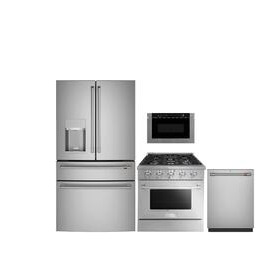How to choose the best stove for your kitchen

Which is better: induction or gas or electric? Stoves may come with a variety of choices. Gain a fundamental understanding of each kind and the factors to take into account when selecting a stove.
Because there are so many different kinds of burners and cooktops available, it may be challenging to pick the cooktop that is most suitable for your home, much alone the requirements of your family. When sorting through your alternatives, in the end, you'll need to strike a balance between your aesthetic tastes, your cooking habits, and your finances. Because of this, we have compiled this concise reference to the kitchen stove types that are the most often used.
Induction stoves

Electric stoves are referred to as induction hobs. Induction cooktops, on the other hand, do not use the more conventional exposed heating components; rather, they use magnetic coils that are covered by a glass-ceramic surface. Electromagnetism is what causes the cooktop to heat up, therefore in order for it to produce heat, an induction-compatible metal pot or pan must be put on top of the cooktop.
Pros:
When utilising an induction cooktop, cookies have a lower risk of burning since an induction cooktop does not produce heat via flames or other direct electrical sources.
Cooktops that use induction technology are often more energy efficient than those that use gas or electricity.
Cooktops that use induction technology heat food very instantaneously and are highly responsive to changes in temperature. They provide a high level of control and accuracy for the user.
Cons:
Cooktops that use induction technology are often more costly than equivalent cooktops that use gas or electricity.
Induction technology is only compatible with certain types of cookware, though. If you decide to purchase an induction cooktop, you may find that you need to purchase new magnetic cookware with a flat bottom.
Smooth surface electric stoves

The actual heating components of a smoothtop electric cooktop are hidden from view by a glass-ceramic surface, much as they are in induction cooktops. On the other hand, the heat that comes from below comes from steel coils or halogen bulbs.
Pros:
Smooth surface electric ranges are able to transmit more heat directly to the pots and pans you are using because they maximise the infrared conductivity of the glass-ceramic materials they are made of. This indicates that they produce less heat waste. In doing so, they contribute to the overall cooling effect of your kitchen while you are cooking.
The only component of the stove that has to be cleaned on a regular basis is the flat surface where food is prepared.
Cons:
The top range's electrical components have flat surfaces that are easily scratched. Scratching a ceramic cooktop's surface may lead to fissures in which food can get stuck and burned, preventing the cooktop from functioning at its optimal level.
In addition, any food that explodes, boils, or spills should be cleaned up right away to reduce the likelihood of leaving a stain that will remain permanently.
Additionally, you need to exercise extreme caution while picking and using cookware so that you do not end up scratching the smooth surface of the stove. Cast iron, for instance, has the potential to damage the smooth surface of a ceramic cooktop readily.
Last but not least, the surface of the stove is made of glass ceramic, and it can only be cleaned with specialised chemicals.
They often cost more than the conventional electric ranges that are available.










